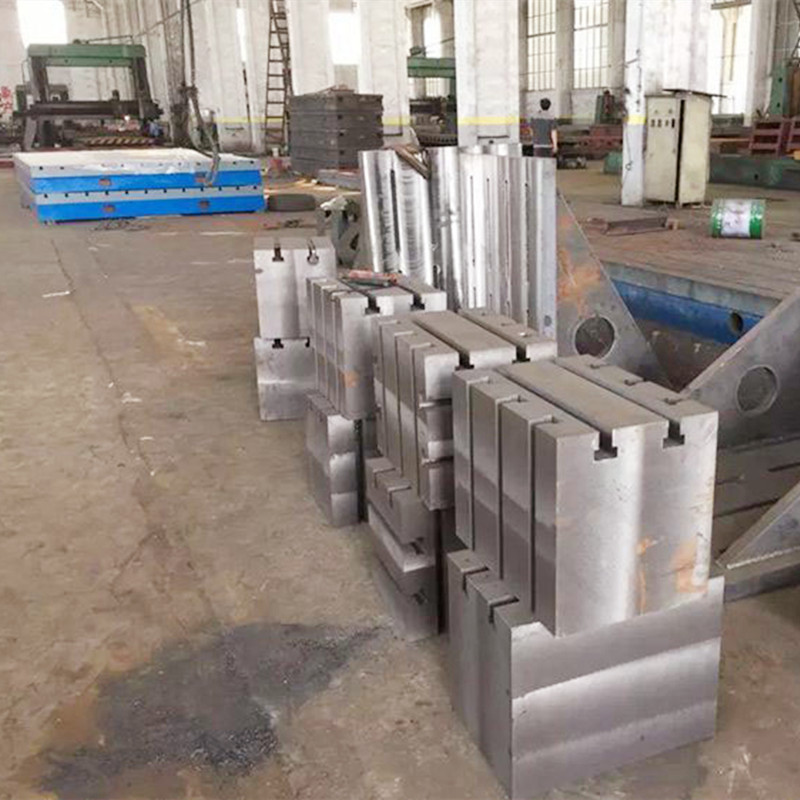Сен . 29, 2024 00:30 Back to list
Exploring the Importance of Surface Plates in Precision Engineering and Manufacturing
Understanding Surface Plates Essential Tools in Precision Measurement and Machining
Surface plates are vital tools in the realm of manufacturing and engineering, playing a crucial role in ensuring accuracy and precision in various measurement processes. These flat platforms are designed to provide a stable and level surface for measuring tools, components, and assemblies, thus forming the foundation of quality control in machining and fabrication. In this article, we will explore the different types of surface plates, their applications, and the importance of proper maintenance to ensure their longevity and precision.
Types of Surface Plates
Surface plates are generally categorized based on the material they are made from, their intended usage, and their size. The most common materials used for surface plates include granite, cast iron, and polymer composites.
1. Granite Surface Plates These plates are widely preferred in the industry due to their durability, resistance to wear, and stability. Granite surface plates are non-deformable and can maintain their flatness over time. They are particularly useful in high-precision applications, such as optical measurements and coordinate measuring machines (CMMs).
2. Cast Iron Surface Plates Known for their rigidity and strength, cast iron surface plates are often used in workshops where heavy machinery and tools are prevalent. They can withstand the weight of large components and are ideal for rough machining operations. However, they are prone to rust if not properly cared for.
3. Polymer Composite Surface Plates These advanced materials are lighter and more resistant to chemicals than traditional surface plates. Polymer composite plates are less susceptible to chipping and can offer excellent thermal stability. Their versatility makes them suitable for various applications, from basic measurements to specialized fields.
Applications of Surface Plates
Surface plates are utilized across multiple industries for various applications
. Some of the most notable uses include- Inspection and Calibration Surface plates provide a precise reference point for inspecting and calibrating various measuring instruments. Tools such as comparators, micrometers, and gauges are commonly used on these plates to ensure accurate readings.
- Assembly and Layout In manufacturing environments, surface plates serve as a workbench for laying out components before assembly. They help ensure that parts are properly aligned and oriented, reducing the risk of errors during the assembly process.
surface plate

- Machining Operations Surface plates are employed as a base for machine setup, particularly in operations that require high degrees of accuracy. They also assist in the measurement of machined parts, allowing for adjustments and corrections to be made in real-time.
- Education and Research In educational institutions and research facilities, surface plates are essential for teaching students about precision measurement and the importance of flatness, contributing to the development of future engineers and technicians.
Maintenance and Care
To maintain the accuracy and longevity of surface plates, proper care and maintenance are essential. Regular cleaning is vital to prevent the buildup of dust and debris, which can affect measurement precision. Here are some best practices for maintaining surface plates
1. Routine Cleaning Use a soft cloth or non-abrasive cleaner to wipe the surface. Avoid harsh chemicals that can corrode or damage the material.
2. Storage When not in use, cover the surface plate to protect it from dust and potential damage. If possible, store it in a climate-controlled environment to minimize temperature fluctuations that can affect the material.
3. Periodic Calibration Over time, surface plates can become worn or chipped. Regular calibration checks should be conducted to ensure that they maintain their flatness and accuracy.
4. Handling Always handle surface plates with care. Heavy impacts or dropping can lead to cracks or chips. Use appropriate lifting techniques when moving them.
Conclusion
In conclusion, surface plates are indispensable tools in the fields of precision measurement and machining. Their role in ensuring accuracy in inspections, assembly, and manufacturing processes cannot be overstated. By understanding the various types available, their applications, and the importance of maintenance, industries can enhance their quality control measures and ensure the production of high-quality components. As technology continues to evolve, the relevance of surface plates in maintaining precision will remain paramount, making them a cornerstone of modern manufacturing practices.
-
Why Metric Trapezoidal Thread is Ideal for Precision Motion ControlNewsAug.05,2025
-
The Unique Properties of a Block of Granite for Industrial UseNewsAug.05,2025
-
The Role of Flanged Y Strainers in Preventing Pipeline ClogsNewsAug.05,2025
-
The Importance of Regular Calibration for Master Ring GagesNewsAug.05,2025
-
How a Cast Iron Surface Table Enhances Accuracy in ManufacturingNewsAug.05,2025
-
Comparing Different Check Valve Types for Optimal Flow ControlNewsAug.05,2025
Related PRODUCTS









